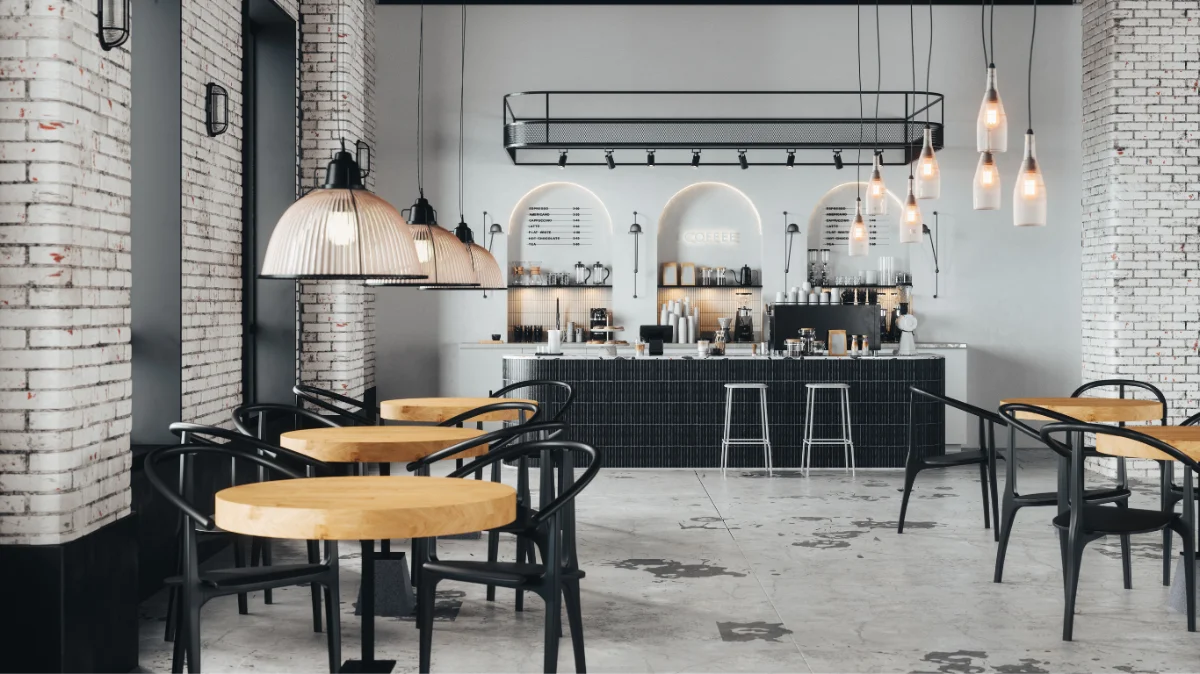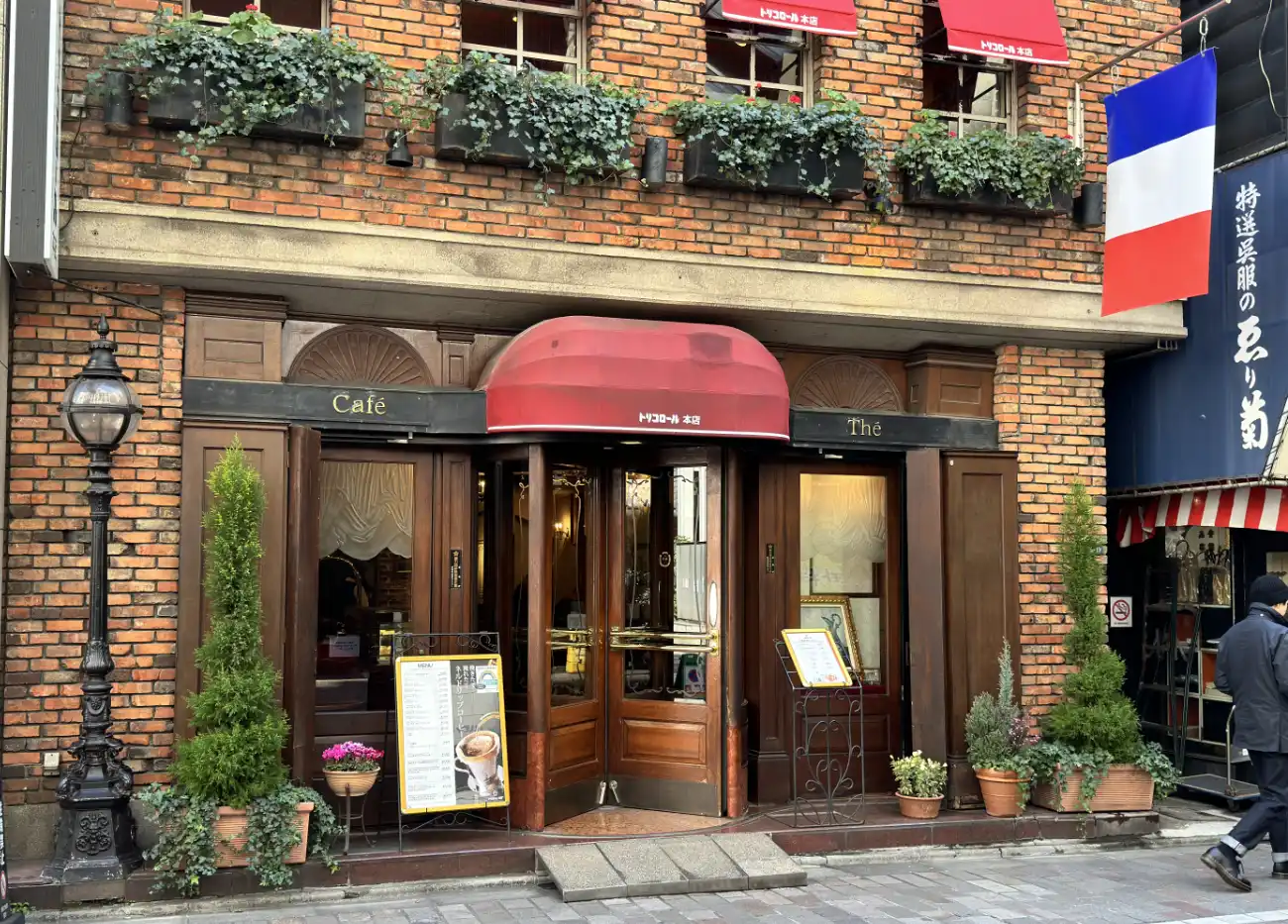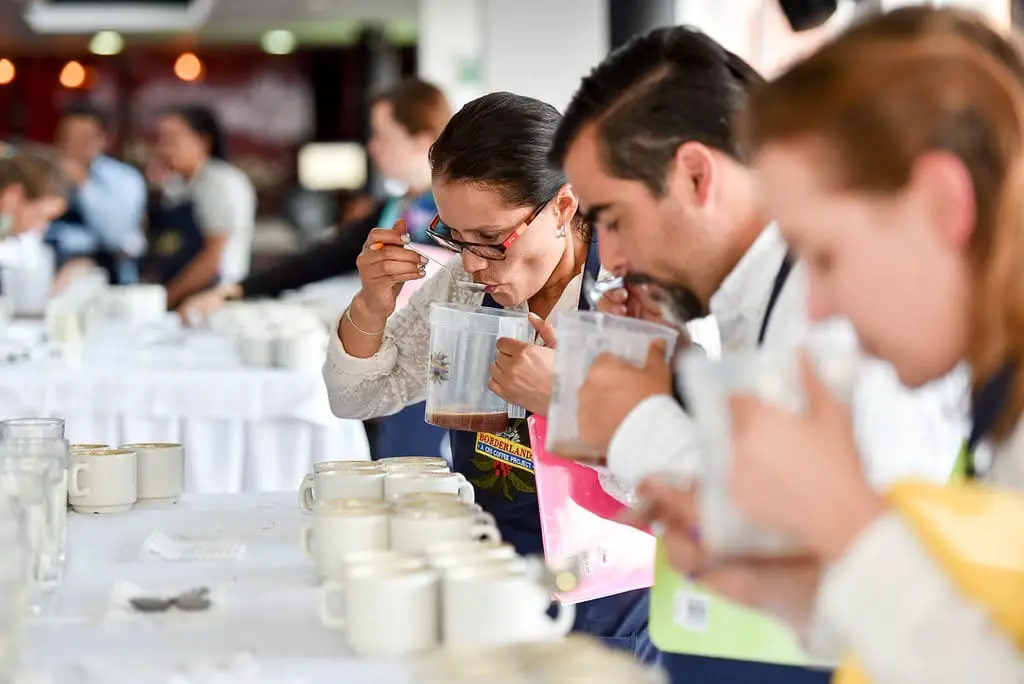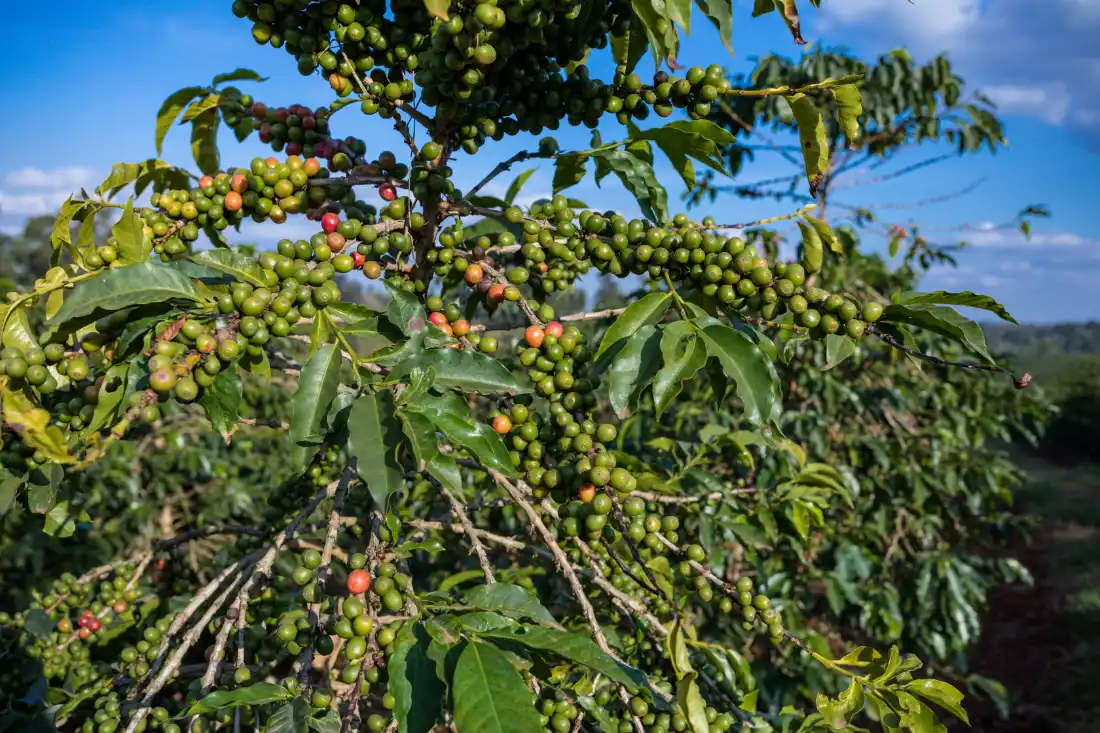Have you ever wondered what third-wave coffee is all about? Is it just a marketing gimmick of the big multinational coffee companies, or is it more than that? Should you take it seriously? It’s complicated. And it’s not even global. My experience with coffee growing up in Europe is quite different from the American one. The history of coffee in Europe goes back almost 400 years, and many of the elements of those traditions have been borrowed and integrated into the “third wave”. In my post about Austrian coffee, you will find more information about the Austrian connection, and in the last part of this post, I will talk about some European influences in general.
And if there is a third wave, you may ask: What about the first and second waves?
In this article, I will shed some light on this phenomenon, mainly from the American viewpoint.
The Coffee Waves
Let me quickly run through history and elaborate on the first two waves to put the Third Wave Coffee trend into perspective. It will help to appreciate its importance.
Please note that the following overview centers on the US. The developments were not necessarily the same in other parts of the world, like European countries or Japan. Sometimes, the chronology was reversed, but there were also certain overlaps and influences in both directions.
First Wave Coffee – Coffee as a Mass-market Product
Some sources state that the First Wave of Coffee began in the 17th century. This was indeed the beginning of coffee spreading outside of the Ottoman Empire. The first coffee shops appeared in Italy in 1632, England in 1650, and Austria in 1683. At that time, coffee culture was still in its infancy and by far not as popular as today. Latin America was not yet on the map as a coffee producer, and I don’t know what the Americans were drinking then.
Placing the beginning of the First Wave of Coffee in the late 1800s makes more sense, I believe. This was the time when coffee evolved into a mass market and became easily available across the globe. Coffee was sold in large quantities to restaurants, hotels, diners, and supermarkets. Businesses were the major force behind this wave. This was when brands like Folgers and Maxwell House dominated the market. They were selling coffee, mostly pre-ground, and from the early 1900s, started marketing instant coffee as well. The common method of preparation was with percolators.
The concept of enjoying coffee as a unique and flavorful beverage was not yet developed by the general public. There was little knowledge about the origin of the beans or varietals, and nobody cared. The quality of coffee was quite different from today.
Second Wave Coffee – The Rise of Coffee Shop Culture
The Second Wave of Coffee emerged during the mid-20th century. The focus shifted towards quality and branding. This wave marked the rise of popular coffee chains like Peet’s Coffee & Tea and later Starbucks, introducing various espresso-based drinks. The emphasis was on the ambiance of cafes and the consumer’s connection to a particular brand. Starbucks was born in 1971 in Seattle and conquered the world in the following decades with appealing store designs, personalized coffee drinks, and clever marketing. With the rise of the coffee shop culture in America, coffee became a social experience.
Italian and Austrian coffee house cultures, which were much older, were used as role models.
The second wave also saw specialty coffee’s rise and the emergence of coffee connoisseurship. Arabica coffee beans became popular thanks to their superior flavor profiles, and robusta beans were relegated to second place. Consumers began seeking unique flavors, origins, and brewing methods, leading to the birth of independent coffee shops and micro-roasters. Coffee became more than just a commodity but an experience, with baristas focusing on crafting espresso-based beverages. Latte art, which originated in Italy, became more and more popular. It does not contribute to the taste at all but adds a hint of sophistication.
Consumers were introduced to coffee beverages inspired by Italian and Austrian coffee culture, such as cappuccino, latte, and variations. However, the big coffee chains did not always use quality coffee beans and often over-roasted them to a very dark level. Sugary flavors were added to mask the inferior taste, turning coffee into a dessert drink. I believe this development did not contribute to the advancement of a true coffee experience.
3rd Wave Coffee – The Era of Specialty Coffee and Refinement
The 3rd wave of coffee, which has been ongoing since the early 2000s, represents a refinement and further elevation of the coffee experience. One of the most influential pioneers was George Howell, who 2004 established a new coffee company in Boston, MA, after a 30-year career in coffee roasting. His slogans sum up the essence of the third wave movement:
- reward the farmers
- roast to perfection
- educate coffee consumers
This wave highlights the concept of coffee as an artisanal product, emphasizing traceability, transparency, and direct relationships between farmers, roasters, and consumers. Specialty coffee took center stage, focusing on single-origin coffees, small-batch roasting, and precise brewing techniques. The flavor profile, terroir, varietals, and processing methods became significant factors in choosing and appreciating coffee. The third wave also promotes sustainability and ethical practices, encouraging farmers to produce high-quality beans while prioritizing organic farming and environmentally friendly processes.
It is important to note that these waves are not rigidly defined and often overlap, with the impact of each wave still present in the current coffee landscape. Each wave represents a progression towards greater quality, education, and awareness, giving consumers a wider range of options and fostering a deeper appreciation for the beverage.
Understanding Third Wave Coffee and Pursuit of Perfection
The almost obsessive attention to detail at every step of the production process, from the planting to your cup, is at the core of the third wave.
It begins with the meticulous sourcing of green coffee. Specialty coffee roasters often establish a direct relationship with specific farms with the highest standards in cultivation and post-harvest processing.
Special attention is paid to the coffee beans’ quality, flavor, and origin. The intention is to create a deeper connection between the consumer and coffee, sharing the story behind each cup. This includes describing the origin of the beans, the background of the farmers and roasteries involved, and providing insight into the distinctive flavors or notes that can be tasted in the coffee.
The third wave coffee movement also strongly emphasizes roasting processes. Medium or light roasts are preferred as they perfectly highlight the bean’s unique flavors. The movement has also revived and refined classic brewing methods, such as pour-over and French Press coffee, and introduced new techniques like the AeroPress. A higher level of scrutiny is placed on all aspects of preparation. Factors such as grind size, dose, tamping pressure, temperature control, preinfusion, water to coffee ratio, and brew time are essential.
Sustainability is also a key component, as more consumers prioritize environmentally conscious practices and ethical sourcing. This focus on sustainability further reinforces the importance of environmentally sound farming practices and the support of farmers and their families.
Single-Origin and Direct Trade
The third wave coffee movement focuses on our coffee’s quality, origin, and production methods. One important aspect of this movement is using single-origin beans and the practice of direct trade.
Single-origin beans refer to coffee sourced from a specific area, often from an individual farm or small geographical region. This practice allows for a unique and distinct flavor profile, reflecting the terroir and growing conditions specific to that area. By using single-origin coffees, consumers can appreciate the diverse flavors and characteristics of beans from different parts of the world. At the same time, they help to support small-scale coffee farmers and their communities.
Direct trade is a practice that establishes a direct connection between coffee farms and roasters. This practice fosters transparency and traceability. Both parties can communicate and improve every step of the production process. By engaging in direct trade, coffee roasters can ensure that the farmers are fairly compensated for their work while contributing to the sustainable development of coffee-growing regions.
Single-origin beans and direct trade practices are the foundation of a more ethical and quality-focused coffee industry. The result is a more enriching and enjoyable coffee experience that benefits everyone involved.
Key Players in Third Wave Coffee
Farmers
The coffee journey starts with farmers. They play a pivotal role in the coffee industry, as they are responsible for cultivating and harvesting the beans that ultimately determine the quality and flavor of the coffee. Their expertise in choosing the best varietals, developing and honing innovative farming methods and post-harvest processes are crucial to expand the quality horizon.
It’s the independent and dedicated farmers you have to go to when you want a true single-origin coffee that has been so valued since the third wave came over us. Only a single origin coffee gives you a true sense of individuality, reflecting the terroir’s uniqueness and the farmer’s skills.
We must realize that independent farmers cannot compete with the big farms on price but only with superior quality. It is imperative to ensure they can make a living from their coffee plantations. Otherwise, we will all lose out. This is where the Fair Trade concept comes into play.
Roasters
Mega roasters have dominated the coffee market for a long time, but specialty coffee roasters play an increasing role in the third wave. Specialty roasters are of smaller size, giving them some advantages:
- They can source green beans even from small lot farms, which gives them access to real single origin coffees. Often, they establish a close and mutually beneficial relationship, which gives them deep insight into the production and post-harvest processing. They can use the information to inform and educate their customers, which adds value to the end product.
- They can do small batch roasting and experiment with innovative roasting techniques, different roast profiles, time and temperature combinations, and even the type of roasting equipment. The roasting process is where the magic happens, as the beans undergo chemical changes that develop their unique and complex flavors.
Here are my favorite coffee roasters who maintain close relationships with coffee farmers. They have gained recognition for their commitment to quality and dedication to showcasing each coffee bean’s unique characteristics: Volcanica Coffee, Spirit Animal Coffee, and Altruistic Joe.
These specialty roasters sell their carefully crafted products online, and also offer coffee subscriptions.
Coffee Shops
A growing number of coffee shops identify themselves as third wave cafes. These mostly independently owned cafes go beyond just serving a cup of joe – they strive to perfect the art of coffee making. They provide a unique and sophisticated experience to coffee lovers. With attention to detail, they focus on sourcing high-quality beans from specific regions or farms, some roasting them in-house and brewing each cup with precision. What sets these cafes apart is their dedication to showcasing the intricacies and complexities of coffee flavors.
These establishments often use manual pour-over brewing, which allows better control of the extraction process, resulting in a cleaner, more flavorful cup of coffee. You can also find coffee made with the AeroPress or a siphon (vacuum coffee maker). The latter is somewhat popular in Japan.
As an added touch, many third wave cafes also offer a selection of freshly baked pastries and light bites, making them a perfect spot for a quick breakfast or afternoon pick-me-up.
Some cafes of this new generation are stylish, with clean lines, minimalist décor, and cozy seating arrangements. Others may look chaotic, reflecting the owner’s personality, whose priorities may focus more on the coffee than design issues. Here are two extreme examples from the exciting coffee town of Tokyo:
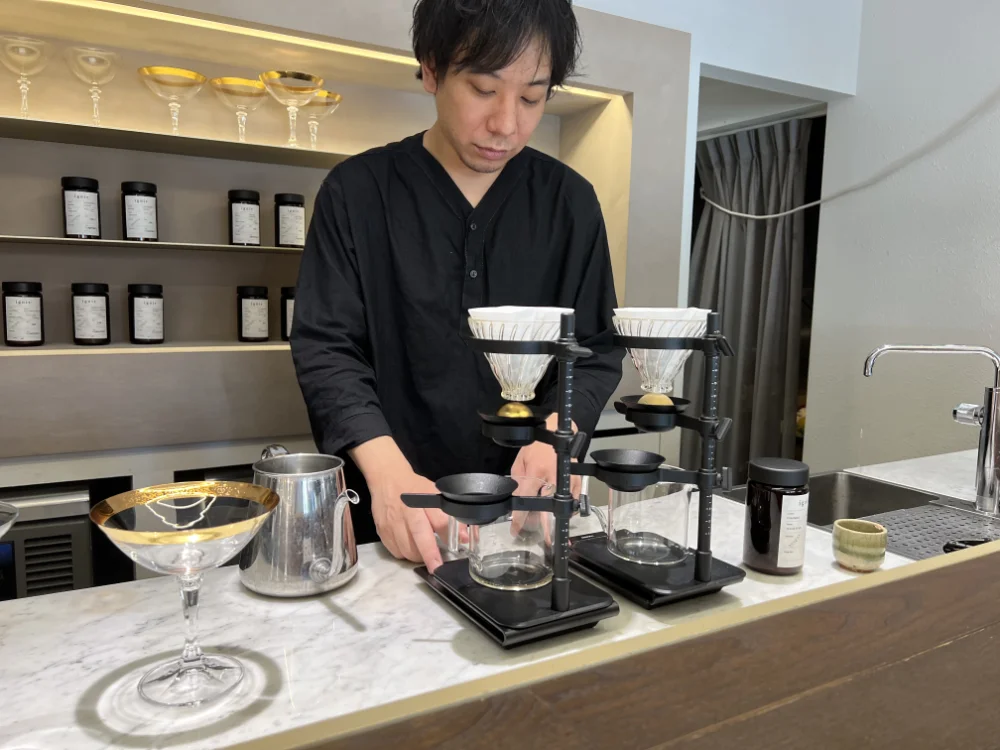
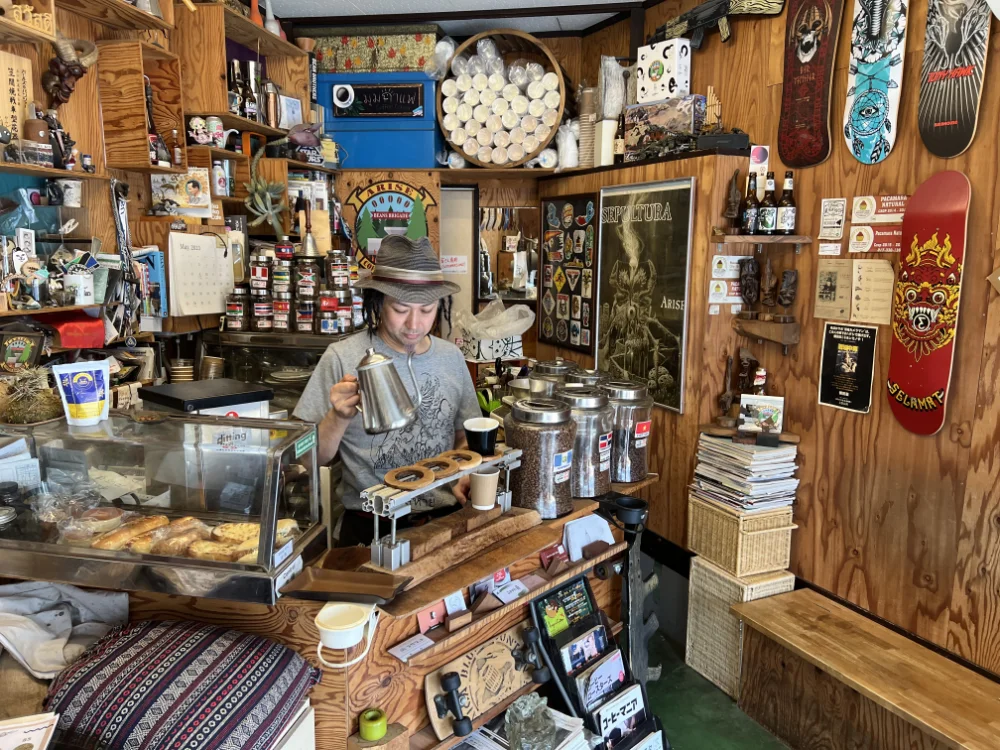
Blue Bottle Coffee is considered a major player in the third wave among the major coffee companies. Stylish and minimalistic stores and a great selection of single origin coffee prepared by the pour-over method created this vibe. However, in 2017, Nestlé bought 68% of the company. I am sure this had some impact on their business strategy. The last time I checked, I was a bit disappointed with their coffee menu. It is still top quality coffee, but a lot less adventurous and more suited to the taste of a larger audience.
Starbucks, another major coffee company, has also taken notice of the movement and is trying to catch up by offering hand-dripped specialty coffee in a few stores alongside their typical second wave offerings. From what I have seen, the typical Starbucks clientele’s reaction seems rather cool. But Starbucks also sells an impressive range of roasted coffee beans, including micro-lots from various origins.
Brewing Techniques
Even with the best beans on the planet, improper brewing can ruin your coffee. Attention to detail and meticulous execution is imperative. Baristas of the third wave are embracing traditional methods, refined and perfected them. Besides the traditional gear, newly developed equipment like the AeroPress also finds a following.
Espresso
Espresso is a classic, but still popular in the Third Wave Coffee movement. Hot water is forced through finely ground coffee beans under high pressure, producing a concentrated coffee shot. Using a real espresso machine is essential for highlighting the flavor notes of selected beans. Here, baristas can demonstrate their skills, controlling with precision factors such as grind size, water temperature, and pressure. They will beat espresso made by push-button coffee makers every time. Espresso can be enjoyed by itself, or can be used as a base for various coffee drinks and is appreciated for its strong and distinct flavor.
Pour-over coffee
Another classic is pour over coffee. This method involves pouring hot water over evenly distributed coffee grounds in a slow, steady manner. The water flows through the grounds, extracting the coffee’s flavors and aromas, and eventually drains through a filter into a serving vessel. The filter can be paper, cloth, ceramic, or metal mesh, each producing a cup with unique characteristics. The barista controls the water ratio, temperature, grind size, and pouring technique, thus unlocking the bean’s full potential and making a clean, bright cup.
French Press
The French Press, or press pot, is another popular brewing method among Third Wave Coffee enthusiasts. This classic technique involves steeping coarsely ground coffee in hot water inside a cylindrical container before pressing the grounds with a plunger. The coffee is then separated from the grounds and poured into a cup. The French Press can produce a rich, full-bodied coffee that retains its natural oils and flavors, making it a preferred choice for those seeking a bolder and more robust experience. Careful control over steeping time, water temperature, and grind size contributes to an exceptional coffee experience.
Impact on the Coffee Industry
The third wave coffee movement has brought significant changes to the coffee industry, placing a higher emphasis on quality, sustainability, and craftsmanship behind every cup of coffee. This has led to increased consumer awareness and a rising demand for specialty coffee, driving innovation in every layer of the industry, such as processing, roasting, and brewing techniques.
The Specialty Coffee Association (SCA) plays a vital role in shaping the direction and developments of the third wave coffee movement. By connecting coffee professionals, promoting education, and setting quality standards, SCA helps elevate the industry to new heights. The coffee auctions, like the “Best of Panama” and others in many coffee producing countries, receive much international interest and attention.
One of the most significant impacts can be seen in the increased appreciation of coffee farmers. The emphasis on direct trade, fair compensation, and long-term partnerships gives these farmers greater stability and incentives to produce high-quality coffee beans. In turn, this enhances quality, sustainability, and the farmers’ livelihoods.
The third wave movement has also sparked increased interest in coffee consumption through community, academic, and commercial experiences. As a result, more coffee shops are dedicated to creating the perfect cup of coffee and fostering environments for coffee lovers to gather, share, and learn about coffee. Consequently, innovation in brewing equipment is on the rise to meet the demand for exceptional coffee experiences.
In conclusion, the third wave coffee movement has had far-reaching effects on the coffee industry. By redefining expectations and pushing for quality, sustainability, and craftsmanship, the coffee world continues to innovate and evolve to meet the demands of specialty coffee aficionados and enthusiasts.
Will there be a Fourth Wave of Coffee?
The world of coffee will certainly continue to evolve, bringing us a fourth wave and maybe more in the future. How these waves will look like is anyone’s guess.
Building on the foundation set by the third wave of coffee, which emphasized high-quality, lighter roasts and distinct flavors by sourcing beans from individual farms, the fourth wave looks to expand upon these ideals. Once you have sniffed the flavor of outstanding quality, there is no going back.
More people will discover the new dimension of flavors of quality beans that are not roasted to death. This will eliminate the need to mask the smell of burnt coffee, and we may see a lot less dessert-like coffee concoctions. A broader following and deeper understanding will help to overcome the image of “hippster snobbery”. This shift in perception will allow the appreciation of quality coffee to reach beyond a select few enthusiasts.
Another area with room for development is home brewing equipment. While I have never been in favor of automated coffee making, I see that a new generation of coffee makers is emerging that mimics a barista’s technique almost to perfection. I don’t know whether or not they are using AI, but I wouldn’t be surprised. I tried the Balmuda, a high-tech coffee maker developed in Japan, and I was impressed with the results.
This machine is available on amazon.com, but it’s not cheap. It is a parallel import, meaning it is not certified for use in the US, a bureaucratic rather than a technical issue. But it also means you may not get any service in the unlikely case of a breakdown. In my experience, most Japanese household appliances are far superior in terms of reliability to anything sold in the US, including Italian-made gear.
European Coffee Culture Inspired the Third Wave of Coffee
I believe that the 3rd wave has brought a lot of good to the appreciation of coffee and the dedicated farmers in the coffee belt around the world. But looking at all the hype about it, I believe there is a lot of exaggeration and marketing involved. Many of the “new” developments described had been in place long ago in Europe.
Coffee house culture
The coffee house culture started in the mid-1600s with the first coffee house in Europe opened in 1647 in Venice, Italy. Just a few years later, coffee houses opened in London. Right after the victory over the Osman Turks in 1683, coffee shops opened in Vienna, Austria. These were comfortable and cozy places for relaxing and socializing with friends. Sure, they didn’t have WiFi, but provided free newspapers for their patrons. Coffee houses in Europe were often family-owned, some roasting their own beans. There was only a limited variety of classic coffee drinks, with no distraction from sugary and artificial flavors. Coffee was served in porcelain cups, and coffee-to-go was no option yet.
This amazing culture inspired Starbucks and other chains to incorporate design elements and coffee menu ideas. Some used Italian names for their coffee drinks or paper cup sizes. Blue Bottle Coffee, the renowned 3rd wave coffee chain, even took its name from the first Vienna coffee house, the “Hof zur Blauen Flasche”.
Coffee quality and brewing methods
European customers were always concerned with the quality of their coffee. Julius Meinl, one of the oldest roasting companies, was established in 1862 in Vienna and is still recognized as a prime-quality coffee roaster. Big roasters started only to get traction in the 1960s in Germany. Before that, you could find small roasters in almost every town. Single-origin coffee was the norm at these small roasters, and often, you could even pick the varietal. My mom’s favorite was the Maragogype bean, which is hard to find nowadays.
On the other hand, the big roasters created expertly blended coffee brands to supply the mass market. The flavor profile was very well balanced, and many of these blends were designed to be stomach-friendly.
Blue Bottle Coffee’s favorite brewing method is pour-over. This is a method born in the early 1900s in Germany. Melitta, the company behind this, and their coffee filter still exist today. The V60 from Hario or the Kalita filter is patterned after the Melitta original.
Fairtrade coffee
European coffee roasters sourced their beans mostly directly from the exporting countries. Some even owned coffee plantations. In the 1980s, there was a growing awareness that coffee farmers should be fairly treated and compensated. Consequently, Fairtrade coffee certification started in 1988 in Europe.
Starbucks, one of the world’s largest coffee companies, adopted Fairtrade coffee in 2000.
